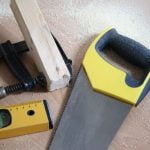Can you take out a larger mortgage for home improvements? Many homeowners wonder about this option when considering renovations or upgrades to their property. A mortgage is a loan specifically used to purchase real estate, and it is often the largest debt that an individual will take on in their lifetime. Understanding how mortgages work, including the potential to increase the size of a mortgage for home improvements, is important for homeowners looking to invest in their properties.
When considering the option of taking out a larger mortgage for home improvements, it’s essential to weigh the pros and cons. On one hand, a larger mortgage can provide the funds needed to make significant upgrades to your home, potentially increasing its value. However, it also means taking on more debt and paying additional interest over time.
Before making any decisions about increasing your mortgage for home improvements, there are several factors to consider. These include assessing your financial situation, understanding your borrowing options, and evaluating the potential impact on your long-term financial goals. It’s crucial to conduct thorough research and seek professional advice when contemplating this financial decision.
The Pros and Cons of Taking Out a Larger Mortgage for Home Improvements
The decision to take out a larger mortgage for home improvements comes with its own set of pros and cons. One of the main advantages is that by borrowing more money, you can potentially increase the value of your home through renovations, which can also enhance your quality of life. By taking out a larger mortgage, you may also be able to access better interest rates compared to other forms of borrowing, such as personal loans or credit cards.
However, it’s important to consider the potential downsides as well. Taking out a larger mortgage means increasing your debt and paying interest on a bigger loan amount over time. This could lead to higher monthly payments and an extended loan term.
Additionally, if the housing market experiences a downturn, you may end up owing more money than what your property is worth. It’s essential to carefully weigh these factors before deciding whether to take out a larger mortgage for home improvements.
Another factor to consider is that while home improvements can add value to your property, not all renovations result in a significant return on investment (ROI). Some upgrades may incur high costs without necessarily increasing the resale value of your home. It’s crucial to research which renovations are most likely to provide a good ROI in your specific market before committing to a larger mortgage for home improvements.
| Pros | Cons |
|---|---|
| Potential increase in home value | Increased debt and interest payments |
| Access to better interest rates | Risk of owing more than property value |
| Improvement in quality of life | Uncertain return on investment for renovations |
Factors to Consider Before Taking Out a Larger Mortgage for Home Improvements
When considering taking out a larger mortgage for home improvements, there are several factors to take into account before making a decision. Here are some key factors to consider:
- Current interest rates: It’s important to analyze current interest rates before deciding to take out a larger mortgage. If interest rates are high, it may not be the best time to increase your mortgage.
- Cost of renovations: Before taking out a larger mortgage, carefully assess the cost of the home improvements you plan to undertake. Make sure you have a detailed budget and understand how much you will need to borrow.
- Equity in your home: Consider how much equity you have in your home. Lenders typically require a certain amount of equity before allowing you to take out a larger mortgage for renovations.
In addition to these factors, it’s crucial to also think about your long-term financial goals and the impact that increasing your mortgage may have on your overall financial situation.
Before making any decisions, it’s wise to seek advice from a financial advisor or mortgage professional who can provide guidance based on your individual circumstances and financial aspirations. Taking these factors into consideration will help you make an informed decision about whether taking out a larger mortgage for home improvements is the right choice for you.
Alternatives to Taking Out a Larger Mortgage for Home Improvements
When considering home improvements, taking out a larger mortgage may seem like a viable option to finance the project. However, there are alternative options to consider that may be more suitable for your financial situation.
Personal Loan
One alternative to taking out a larger mortgage for home improvements is to apply for a personal loan. Personal loans usually have shorter terms and higher interest rates compared to mortgages, but they may be more favorable than increasing your mortgage debt. Additionally, personal loans do not require the use of your home as collateral, reducing the risk of losing your property if you default on the loan.
Home Equity Line of Credit (HELOC)
Another option is to obtain a Home Equity Line of Credit (HELOC). This type of loan allows you to borrow against the equity in your home and is typically used for renovations or other large expenses. HELOCs often have lower interest rates than personal loans and provide flexibility by allowing you to borrow as needed during the draw period. However, it’s important to note that failure to make payments could result in the loss of your home.
Cash-Out Refinancing
Cash-out refinancing involves replacing your current mortgage with a new one that has a higher balance while receiving the difference in cash. This can be an option if current interest rates are lower than what you initially obtained on your mortgage. Cash-out refinancing may also provide tax benefits and potentially lower monthly payments, but it’s essential to carefully consider the long-term implications before pursuing this option.
Ultimately, when contemplating alternatives to taking out a larger mortgage for home improvements, it’s crucial to assess your financial goals, current debt obligations, and risk tolerance.
How to Calculate How Much Extra You Can Borrow for Home Improvements
Taking out a larger mortgage for home improvements can be a big decision, and it’s important to consider how much extra you can borrow. Calculating this amount involves looking at several factors.
Assessing the Value of Your Home
One of the main factors in determining how much extra you can borrow for home improvements is the current value of your home. Lenders typically use the loan-to-value (LTV) ratio to determine how much they are willing to lend. This ratio is calculated by dividing the amount of the mortgage by the appraised value of the property. The higher the LTV ratio, the riskier it is for the lender.
Evaluating Your Current Mortgage
You should also take into consideration your existing mortgage when calculating how much extra you can borrow for home improvements. If you have equity in your home, meaning that its current value is higher than what you owe on your mortgage, you may be able to access some of that equity through a cash-out refinance or a home equity loan.
Budgeting for Home Improvement Costs
Before deciding on how much extra to borrow, it’s crucial to carefully budget for your home improvement project. Consider getting quotes from contractors and estimating all costs involved in the renovation. By having a clear idea of how much you need for the improvements, you can then calculate how much extra mortgage funding will be necessary to cover these expenses.
By carefully evaluating these factors and seeking guidance from a financial advisor or lender, you can determine a realistic amount that you can borrow for your home improvements while keeping your financial situation secure.
The Process of Applying for a Larger Mortgage for Home Improvements
Taking out a larger mortgage for home improvements can be an attractive option for homeowners looking to increase the value of their property while also enhancing their living space. However, the process of applying for a larger mortgage involves several important steps and considerations.
First, it’s essential to determine how much additional funding you will need for the home improvements. This will require obtaining detailed cost estimates from contractors or builders, as well as factoring in any potential unforeseen expenses. Once you have a clear idea of the total amount required, you can then proceed with investigating your options for borrowing against your property.
When preparing to apply for a larger mortgage, it’s crucial to review your current financial situation. Lenders will assess your income, credit score, and existing debts to determine whether you are eligible for a larger loan. It’s advisable to take steps to improve these factors if necessary before submitting an application.
Additionally, it’s important to research and compare different lenders and mortgage products to find the best fit for your needs. Each lender may have different eligibility criteria and terms, so shopping around can help you secure the most favorable terms for your larger mortgage. Finally, be prepared to provide documentation such as proof of income, tax returns, bank statements, and information about the planned home improvements when applying for a larger mortgage.
| Step | Description |
|---|---|
| Determine Funding Needed | Obtain detailed cost estimates and factor in unforeseen expenses. |
| Financial Review | Assess income, credit score, and debts. Take steps to improve these factors if necessary. |
| Research Lenders | Compare different lenders and mortgage products before submitting an application. |
Managing Your Finances After Taking Out a Larger Mortgage for Home Improvements
After taking out a larger mortgage for home improvements, it is important to have a solid plan in place to manage your finances effectively. Here are some tips on how to handle your finances after increasing your mortgage:
1. Budgeting: It is crucial to create a budget that includes the additional mortgage payments. Take stock of your monthly income and expenses, and make adjustments as necessary to accommodate the higher mortgage amount.
2. Emergency fund: With the increase in your mortgage, it is wise to build or add to an emergency fund. This will provide a safety net in case unexpected expenses arise, such as home repairs or medical bills.
3. Cutting unnecessary expenses: Look for areas where you can cut back on spending in order to offset the higher mortgage payments. This could include dining out less frequently, reducing subscription services, or finding more cost-effective insurance options.
By carefully managing your finances and making informed decisions, you can navigate the financial impact of taking out a larger mortgage for home improvements successfully while still maintaining overall financial stability.
Case Studies
In conclusion, taking out a larger mortgage for home improvements can be a viable option for homeowners looking to invest in their properties. However, it is crucial to weigh the pros and cons before making such a financial commitment.
While it allows for immediate access to funds for renovations, it also means taking on additional debt and higher monthly payments. Before deciding to take out a larger mortgage, individuals should carefully consider their long-term financial goals and the potential impact on their overall financial health.
Additionally, there are alternative options to consider when funding home improvements, such as personal loans or home equity loans. These alternatives may offer more flexibility and potentially lower interest rates compared to increasing your mortgage amount. It’s important to explore all available options and seek professional advice to determine the best approach for your specific situation.
Overall, if you decide that taking out a larger mortgage is the right choice for your home improvement project, it’s essential to thoroughly understand the process of applying for the loan and managing your finances afterward. Being well-informed and proactive about your financial decisions will ultimately lead to a successful outcome and an improved living space that adds value to your property.
Frequently Asked Questions
Can I Borrow More on My Mortgage for Home Improvements?
It is possible to borrow more on your mortgage for home improvements through a cash-out refinance or a home equity line of credit. With a cash-out refinance, you can refinance your current mortgage for a higher amount and use the difference for home improvements.
A home equity line of credit allows homeowners to borrow against the equity in their home for renovation projects.
How Large of a Mortgage Can You Take Out?
The amount of mortgage you can take out depends on various factors such as your income, credit score, existing debt, and the current market conditions. Lenders typically use a debt-to-income ratio to determine how much mortgage a borrower can afford. It’s important to carefully consider your financial situation before deciding on the size of the mortgage.
What Is the Difference Between a Home Improvement Loan and Second Mortgage?
A home improvement loan is specifically designed for financing renovations and repairs on a property, while a second mortgage is a separate loan that uses the homeowner’s equity in their property as collateral. Home improvement loans are generally unsecured and may have higher interest rates, whereas second mortgages are secured by the property and may carry lower interest rates but come with the risk of foreclosure if payments are not made.
Both options should be considered carefully based on individual financial circumstances and goals.

I’m thrilled to have you here as a part of the Remodeling Top community. This is where my journey as an architect and remodeling enthusiast intersects with your passion for transforming houses into dream homes.





